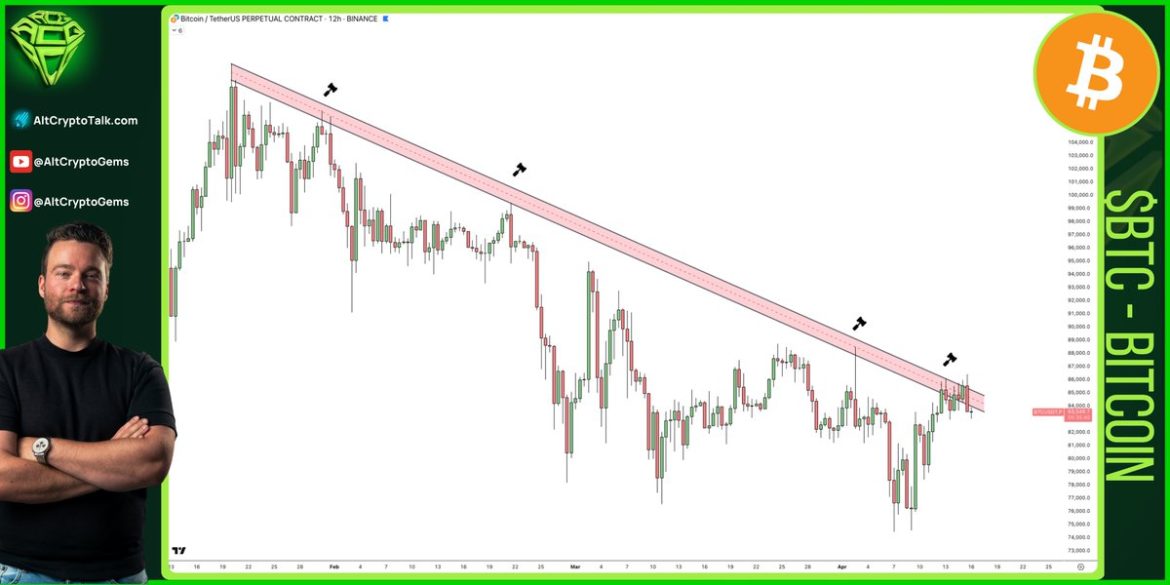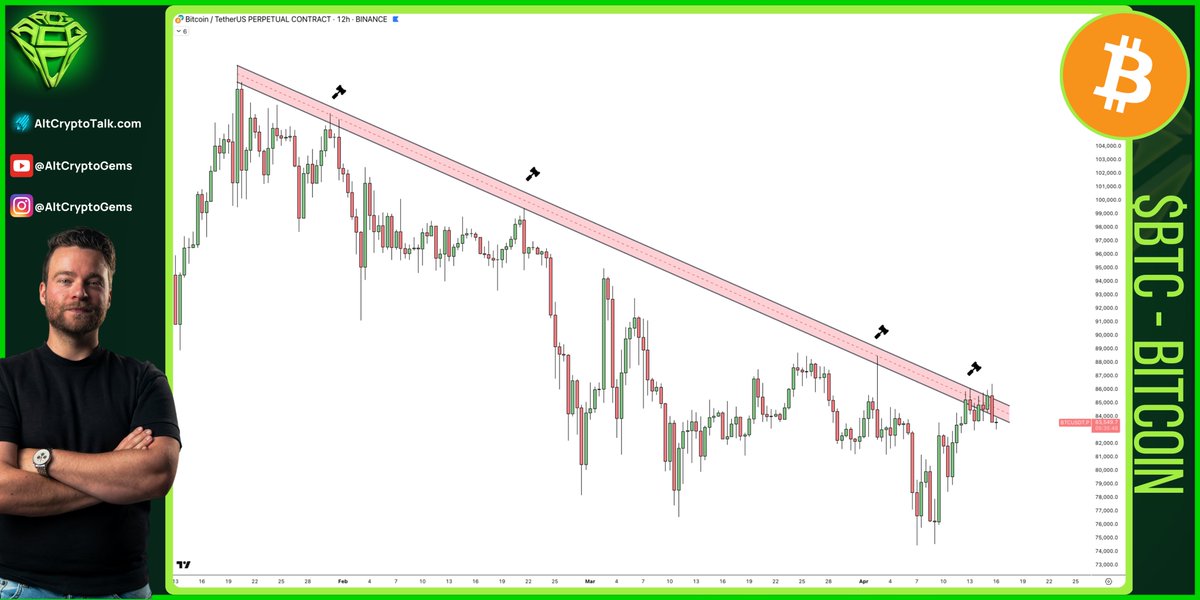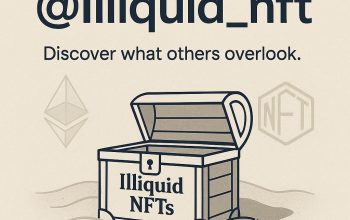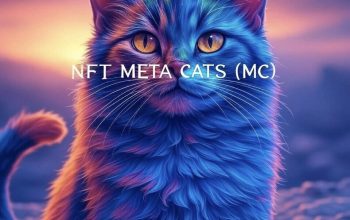The Intersection of Cryptocurrency and NFTs: Opportunities and Insights
A Glimpse into the Crypto Market
Standing on the precipice of a digital revolution, the cryptocurrency market is a landscape of both exhilarating highs and daunting lows. As of 2025, Bitcoin (BTC) remains a titan in this realm, embodying the volatile yet opportunistic nature of the crypto world. The tweet from @mrboricuaboy encapsulates a common sentiment among crypto enthusiasts: the market’s volatility is a double-edged sword, presenting both challenges and opportunities. The concept of a “diagonal resistance” refers to the price of BTC facing a barrier that it struggles to break through. However, if the price dips further, it could present a “buy the dip” opportunity, where investors purchase assets at a lower price in anticipation of future gains.
The crypto market is akin to a vast ocean, where the waves of price fluctuations can be as unpredictable as they are powerful. Navigating this sea requires a keen eye and a steady hand, much like a seasoned sailor. The allure of potential profits is balanced by the ever-present risk of loss, making it a high-stakes game that attracts both adventurous investors and cautious strategists.
The Role of Analysis in Crypto Trading
In the tumultuous world of cryptocurrency, analysis is the compass that guides traders through the storm. It’s the difference between sailing blindly into a squall and charting a course that avoids the worst of the weather. The tweet from @mrboricuaboy underscores the importance of informed decision-making, encouraging readers to delve into his latest in-depth analysis. This analysis likely involves a blend of technical indicators, market trends, and fundamental analysis of the underlying technology and adoption rates of Bitcoin.
Technical Analysis: Reading the Tea Leaves
Technical analysis is like trying to read the tea leaves of the market, looking for patterns and signals that might indicate where the price is headed next. It involves studying price charts and using statistical indicators to predict future price movements. Tools like moving averages, relative strength index (RSI), and Bollinger Bands are commonly used to identify trends and potential entry or exit points.
For example, a moving average can help smooth out price data to form a trend-following indicator, while the RSI can indicate whether an asset is overbought or oversold. Bollinger Bands, which consist of a simple moving average and two standard deviations above and below it, can provide a visual representation of volatility and potential price breakouts.
Fundamental Analysis: The Intrinsic Value
Fundamental analysis, on the other hand, looks at the intrinsic value of the asset. This involves considering factors like the technology behind the cryptocurrency, its use cases, and market adoption. For instance, evaluating the scalability, security, and transaction speed of a blockchain can provide insights into its long-term viability. Additionally, assessing the real-world applications and partnerships of a cryptocurrency can indicate its potential for widespread adoption.
The Rise of NFTs: A New Digital Asset Class
While Bitcoin and other cryptocurrencies have been making waves, another digital phenomenon has been gaining traction: Non-Fungible Tokens, or NFTs. NFTs are unique digital assets that represent ownership of a specific item or piece of content, verified on a blockchain. They have opened up a new world of possibilities, from digital art and collectibles to in-game items and virtual real estate.
The tweet from @Maxim19777 sheds light on the Mad Scientists NFT Collection, which offers tools for analysis that enable NFT owners to monitor data related to their NFTs. This includes pricing and sales figures, which are crucial for investors looking to make informed decisions. The NFT market, like the crypto market, is highly speculative and volatile. Therefore, having access to accurate data and analysis tools is invaluable.
The Unique Appeal of NFTs
NFTs have captured the imagination of artists, collectors, and investors alike. Their unique nature means that each NFT is one-of-a-kind, making them highly sought after. For digital artists, NFTs provide a way to monetize their work directly, bypassing traditional gatekeepers like galleries and auction houses. For collectors, NFTs offer a new form of ownership that can be verified and traded on the blockchain.
The use cases for NFTs are vast and varied. In the gaming industry, NFTs can represent in-game items that players can own and trade. In the real estate sector, NFTs can represent virtual land in the metaverse, which can be developed and sold. The possibilities are limited only by the imagination.
The Convergence of Crypto and NFTs
The worlds of cryptocurrency and NFTs are increasingly intertwined, creating a symbiotic relationship that benefits both. Many NFT marketplaces accept cryptocurrencies as a form of payment, and some NFTs even represent ownership of cryptocurrency-related assets. For instance, an NFT could represent a share in a cryptocurrency mining operation or a stake in a decentralized finance (DeFi) protocol.
Shared Technology: Blockchain
The underlying technology of NFTs—blockchain—is the same as that of cryptocurrencies. This shared technology creates a natural convergence between the two, with advancements in one often benefiting the other. For example, improvements in blockchain scalability and security can enhance both crypto transactions and NFT trading.
Blockchain technology provides a decentralized and transparent way to verify ownership and transactions. This makes it an ideal foundation for both cryptocurrencies and NFTs. As blockchain technology continues to evolve, it will likely drive further innovation in both the crypto and NFT markets.
The Future of Digital Assets
As we look to the future, the landscape of digital assets is poised for further evolution. The convergence of cryptocurrency and NFTs is likely to continue, with new use cases and applications emerging. The metaverse, for instance, is a virtual reality space where users can interact, create, and trade digital assets. NFTs are expected to play a significant role in this space, representing ownership of virtual land, items, and experiences.
The Metaverse: A New Digital Frontier
The metaverse is often described as the next evolution of the internet, a fully immersive digital world where users can interact in real-time. In this virtual space, NFTs can represent a wide range of assets, from virtual real estate to digital fashion. The metaverse has the potential to revolutionize industries ranging from entertainment and gaming to education and commerce.
For example, virtual concerts and events can be held in the metaverse, with NFTs representing tickets or exclusive access. In the gaming industry, NFTs can represent in-game items that players can own and trade, creating a new economy within the game. The possibilities are endless, and the metaverse is poised to become a major player in the digital asset landscape.
AI and Machine Learning: The Future of Analysis
Moreover, the integration of artificial intelligence (AI) and machine learning (ML) in crypto and NFT analysis is set to revolutionize the way investors make decisions. AI-driven tools can analyze vast amounts of data, identify patterns, and predict market trends with greater accuracy. This can help investors navigate the volatile markets more effectively, making informed decisions and maximizing their returns.
For instance, AI algorithms can analyze historical price data and market trends to predict future price movements. Machine learning models can adapt to new data, improving their accuracy over time. These tools can provide valuable insights for both technical and fundamental analysis, helping investors make more informed decisions.
Navigating the Digital Frontier
In conclusion, the worlds of cryptocurrency and NFTs are dynamic and full of opportunities. Whether you’re a seasoned investor or a curious newcomer, staying informed and leveraging the right tools is crucial. The tweets from @mrboricuaboy and @Maxim19777 highlight the importance of analysis and data in making informed decisions. As we venture further into the digital frontier, let’s remember that knowledge is our compass, and data is our map. With these tools, we can navigate the volatile markets, seize opportunities, and make the most of the digital revolution.
The future of digital assets is bright and full of potential. As technology continues to evolve, so too will the ways in which we interact with and invest in these assets. By staying informed and leveraging the latest tools and technologies, we can navigate this exciting and ever-changing landscape with confidence.





